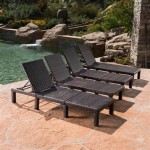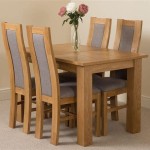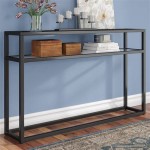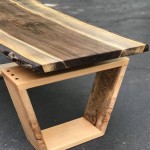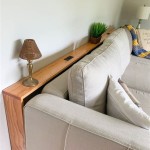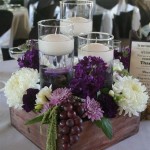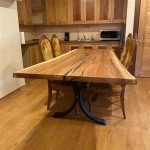Mid-Century Modern Coffee Tables and End Tables: A Guide to Style and Function
Mid-century modern design, a prominent aesthetic movement spanning roughly from the 1930s to the mid-1960s, continues to exert a significant influence on contemporary interior design. Characterized by clean lines, organic shapes, and a focus on functionality, this style offers a timeless appeal that resonates with those seeking a balance between visual elegance and practical utility. Within this broad design category, coffee tables and end tables stand out as crucial elements that define living spaces and contribute to overall aesthetic harmony.
The resurgence of mid-century modern design is fueled by its ability to blend seamlessly with various architectural styles and its emphasis on creating warm, inviting environments. Coffee tables and end tables, in particular, serve as anchoring points within a room, providing surfaces for everyday objects, decorative displays, and social gatherings. Understanding the key characteristics of mid-century modern furniture will enable individuals to select pieces that authentically reflect this iconic style and enhance their living spaces.
Key Characteristics of Mid-Century Modern Design
Mid-century modern design possesses several defining characteristics that distinguish it from other aesthetic movements. These features are typically manifested in the materials, shapes, and construction methods employed in furniture design. A thorough understanding of these elements is essential for identifying and appreciating the authentic qualities of mid-century modern coffee tables and end tables.
One of the most prominent hallmarks of mid-century modern design is the emphasis on clean lines and geometric forms. Furniture pieces typically avoid elaborate ornamentation, instead prioritizing simple, streamlined silhouettes. This minimalist approach contributes to the overall sense of spaciousness and openness that is characteristic of mid-century modern interiors. Coffee tables and end tables often feature rectangular, circular, or oval tabletops supported by tapered legs, creating a visually light and airy appearance. The absence of intricate carvings or excessive detailing allows the natural beauty of the materials to take center stage.
Another defining aspect of mid-century modern design is the use of natural materials. Wood is a dominant element, with teak, walnut, and oak being particularly favored for their rich tones and distinctive grain patterns. These hardwoods are often used in conjunction with other materials, such as glass, metal, and laminate, to create visually interesting contrasts. Coffee tables and end tables may incorporate glass tops to enhance the sense of lightness and transparency, while metal legs or frames provide structural stability and a touch of industrial chic. The preference for natural materials reflects a desire to connect with the outdoors and bring a sense of organic warmth into interior spaces.
Functionality is a core principle of mid-century modern design. Furniture is not merely intended to be aesthetically pleasing but also to serve a practical purpose. This emphasis on utility is evident in the design of coffee tables and end tables, which are often equipped with storage compartments, shelves, or drawers. These features provide convenient spaces for stowing away magazines, remote controls, or other everyday items, helping to maintain a clutter-free and organized living environment. The integration of functional elements into the design ensures that these pieces are both visually appealing and highly practical.
Materials and Construction of Mid-Century Modern Tables
The selection of materials and construction techniques plays a crucial role in defining the quality and durability of mid-century modern coffee tables and end tables. Understanding the characteristics of these materials and the methods used to assemble them can help consumers make informed purchasing decisions and appreciate the craftsmanship involved in creating authentic mid-century modern pieces.
As previously mentioned, wood is a primary material in mid-century modern furniture. Teak, a dense and durable hardwood, is particularly prized for its resistance to moisture and its rich, golden-brown hue. Walnut, another popular choice, offers a darker, more dramatic tone and a distinctive grain pattern. Oak, a versatile and readily available hardwood, is often used for its strength and durability. These woods are typically finished with clear coats or stains to enhance their natural beauty and protect them from wear and tear. The choice of wood can significantly impact the overall aesthetic of the table, influencing its perceived warmth, formality, and suitability for different interior styles.
In addition to wood, metal is often incorporated into the construction of mid-century modern coffee tables and end tables. Steel, chrome, and brass are common choices, providing structural support and adding a touch of industrial flair. Metal legs or frames are typically sleek and minimalist, complementing the clean lines of the wooden tabletops. The use of metal can also create visually interesting contrasts, particularly when paired with warm-toned woods. The combination of wood and metal reflects the mid-century modern design philosophy of blending natural and man-made materials.
Laminate, a synthetic material consisting of layers of paper or fabric impregnated with resin, is another material frequently found in mid-century modern furniture. Laminate offers a cost-effective alternative to solid wood while still providing a durable and aesthetically pleasing surface. It can be manufactured in a wide range of colors and patterns, allowing designers to create visually striking pieces. Coffee tables and end tables with laminate tops are often easy to clean and maintain, making them a practical choice for busy households. While some may view laminate as less desirable than solid wood, it remains a faithful representation of the mid-century modern aesthetic, particularly in its vibrant color and pattern options.
The construction techniques employed in mid-century modern furniture often prioritize simplicity and efficiency. Joinery methods, such as dovetail joints and mortise-and-tenon joints, are used to create strong and durable connections between wooden components. These techniques are not only functional but also aesthetically pleasing, showcasing the craftsmanship involved in the construction process. Metal components are typically welded or bolted together, ensuring structural stability and longevity. The emphasis on durable construction reflects the mid-century modern design philosophy of creating furniture that is built to last.
Selecting the Right Mid-Century Modern Tables for Your Space
Choosing the right mid-century modern coffee tables and end tables for a particular space requires careful consideration of several factors, including the size of the room, the existing furniture, and the overall aesthetic goals. Selecting pieces that complement the surrounding environment and meet specific functional needs is essential for creating a cohesive and harmonious interior design.
The size of the room is a crucial consideration when selecting coffee tables and end tables. In smaller spaces, opting for smaller, more streamlined pieces can help to create a sense of spaciousness. Coffee tables with glass tops, for example, can visually open up a room by allowing light to pass through. End tables with open shelving or tapered legs can also contribute to a lighter, more airy feel. Conversely, in larger rooms, larger coffee tables and end tables can serve as anchoring points, defining specific seating areas and creating a sense of intimacy. Oversized coffee tables can also provide ample surface space for entertaining or displaying decorative objects.
The existing furniture in the room should also be taken into account when selecting coffee tables and end tables. It is important to choose pieces that complement the style, color, and materials of the existing furniture. For example, if the room features a mid-century modern sofa upholstered in a neutral fabric, a coffee table with a walnut tabletop and metal legs would be a suitable choice. If the existing furniture is more eclectic, it may be possible to incorporate coffee tables and end tables with bolder colors or more unusual shapes. The goal is to create a cohesive and harmonious look that reflects a personal style.
The functional needs of the space should also be considered when selecting coffee tables and end tables. If the coffee table is primarily intended for entertaining, it should be large enough to accommodate drinks, snacks, and other items. If the coffee table is primarily intended for everyday use, it should be equipped with storage compartments or shelves for stowing away magazines, remote controls, and other everyday items. End tables should be positioned within easy reach of seating areas, providing convenient surfaces for lamps, books, and drinks. The choice of coffee tables and end tables should be guided by the specific activities that will take place in the room.
Ultimately, the selection of mid-century modern coffee tables and end tables is a matter of personal preference. However, by considering the key characteristics of mid-century modern design, the materials and construction techniques employed in creating these pieces, and the specific needs of the space, individuals can make informed decisions that result in aesthetically pleasing and functional living environments. These tables are more than just pieces of furniture; they are statements of style and reflections of a timeless design aesthetic.

Mid Century Modern Coffee Table And End Tables With Rattan Shelves Suspended By Bent Wood Epoch

Mid Century Modern Coffee Table Small Square Accent Wooden Side Etsy
Vintage Mid Century Teak Danish Modern Arrebo Mobler End Tables

Wasco Mid Century Modern Coffee Table And 2 End Tables With Glass Top Walnut Christopher Knight Home Durable 3 Piece Set

Mid Century Nesting Coffee Tables Set Of 3 For Sale At Pamono

Set Of Lane Rhythm Coffee Side Tables Vintage Midcentury Occasional Sweet Modern Akron Oh

Reeve Mid Century Coffee Table 2 Side Tables Set Modern Living Room Furniture West Elm

Rustic Wooden Coffee Table For Living Room Handmade Mid Century Live Edge Brown Farmhouse Unique Solid Modern Side Tables Etsy Finland

Reeve Mid Century Coffee Table 2 Side Tables Set Modern Living Room Furniture West Elm

Mid Century Modern Square Walnut Cocktail Coffee End Side Table Style Founders For Sale At 1stdibs

